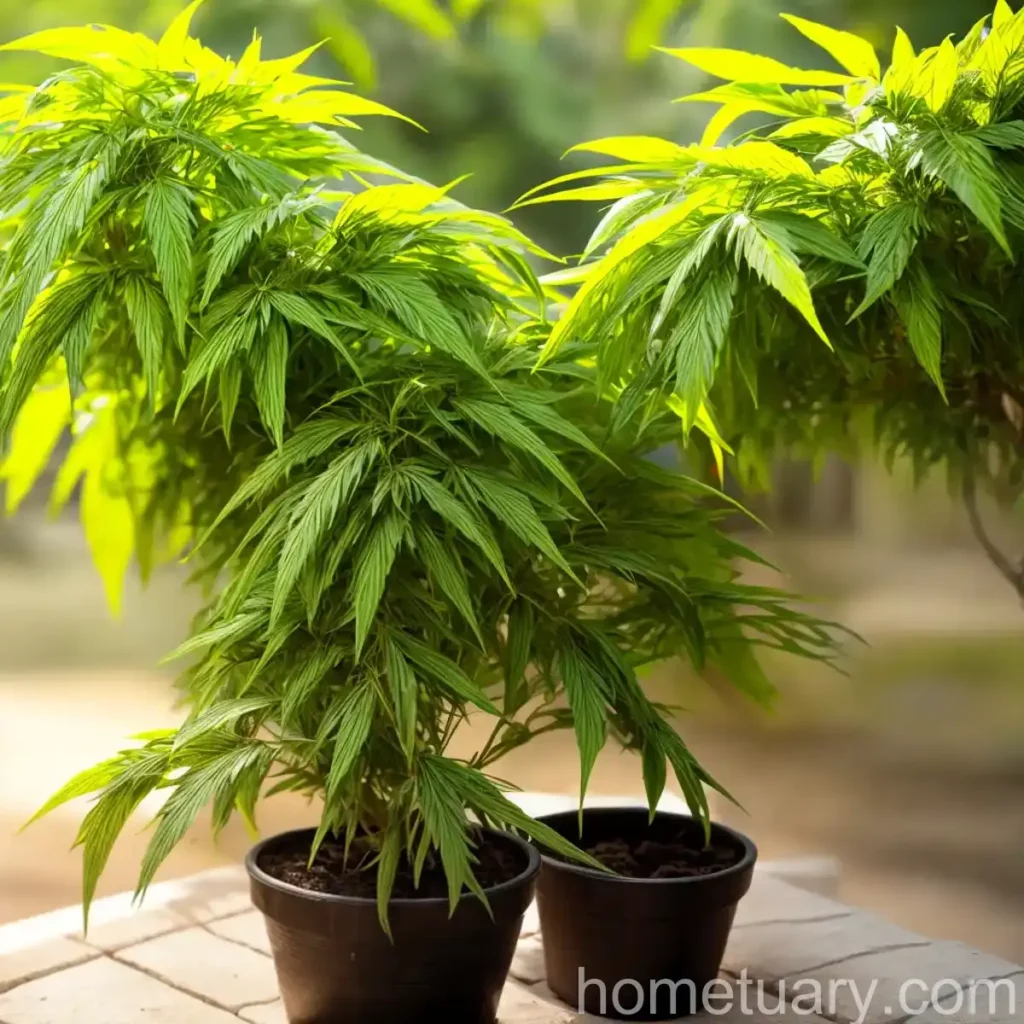Neem (Azadirachta indica): A Wonder Plant of Nature
Neem (Azadirachta indica) is a fascinating plant that holds a special place in traditional medicine and is widely revered for its remarkable properties. In this article, we will explore the various aspects of neem, including its cultural significance, uses, care requirements, common diseases and pests, propagation, and much more. Let’s embark on a journey through the realm of neem and uncover the mysteries and marvels associated with this extraordinary plant.
What is Neem (Azadirachta indica)?
Overview
Scientifically known as Azadirachta indica, neem is a fast-growing evergreen tree that belongs to the mahogany family, Meliaceae. This tree is native to the Indian subcontinent and has been an integral part of traditional Indian medicine and Ayurveda for centuries.
Physical Characteristics
Neem trees are characterized by their dense, spreading foliage and small, white flowers that bear small, olive-like fruits. The compound leaves are arranged alternately on the branches, with each leaf comprising multiple leaflets.
Cultural Significance
In Indian culture, the neem tree is regarded as a sacred symbol of health and wellness. It is often referred to as the “village pharmacy,” highlighting its extensive uses in traditional medicine and natural remedies.
Key Takeaways – Neem (Azadirachta indica)
Before delving into the specific aspects of neem care and cultivation, let’s take a look at some key takeaways related to this remarkable plant:
- Neem has been used for centuries in traditional medicine and Ayurveda.
- The tree is revered for its diverse uses, ranging from skincare and hair care to pest control and digestive health.
- One of the most significant products derived from neem is neem oil, which is valued for its numerous applications in agriculture, skincare, and pest control.
Now, let’s delve into the essential aspects of neem care, focusing on its cultural requirements, uses, and maintenance.
Culture
Cultural practices play a vital role in caring for neem trees, ensuring their optimum growth and health. Understanding the cultural requirements of neem is crucial for creating an environment where the plant can thrive and fulfill its potential.
Water
Neem trees exhibit moderate to high tolerance to drought conditions once they are well-established. However, during the initial years, it is important to ensure consistent and sufficient moisture to support their growth. Adequate watering, especially during the dry and hot seasons, is essential for young neem trees and newly planted saplings.
Sunlight
Neem trees are inherently adapted to thrive in full sunlight. They require a minimum of 6-8 hours of direct sunlight each day to support their robust growth. Inadequate sunlight can result in leggy and sparse foliage, affecting the overall health of the tree.
Fertilizer
When it comes to fertilization, neem trees have relatively low nutrient requirements. They can thrive in a variety of soil conditions, including poor and degraded soils. However, a balanced fertilizer regimen can enhance their growth and foliage density. Application of organic fertilizers, such as well-rotted compost or aged manure, can provide the necessary nutrients for healthy neem trees.
Soil
Neem trees are remarkably adaptable to different soil types, ranging from sandy loam to clayey soils. However, they prefer well-draining soil with a slightly acidic to neutral pH. Ample organic matter in the soil can promote vigorous growth and foliage development in neem trees.
Pruning
Regular pruning is beneficial for shaping the neem tree and removing dead or diseased branches. Pruning can also help to maintain the desired size and shape of the tree, contributing to its overall aesthetics and health.
Propagation
Neem trees can be propagated through seeds, cuttings, or air layering. However, propagation from seeds is the most common and straightforward method. Neem seeds have a relatively short viability period and should be sown promptly after harvesting for better germination rates.
Container Popularity
The adaptability of neem trees to container culture makes them popular choices for urban gardening and ornamental plantings. Their lush foliage and compact growth habits make them suitable for container cultivation on patios, balconies, and terrace gardens.
Uses
The uses of neem are incredibly diverse and encompass a wide range of applications, including medicinal, agricultural, and cosmetic purposes. The plant’s various parts, including its leaves, seeds, and oil, are utilized for their unique properties and benefits.
Medicinal Uses
Neem has been an integral component of traditional medicine, particularly in Ayurveda, for its wide-ranging medicinal properties. The leaves, bark, and seeds of the neem tree are used to prepare remedies for ailments such as skin disorders, gastrointestinal issues, and respiratory conditions.
Neem Oil Benefits
Neem oil, derived from the seeds of the neem tree, is valued for its potent insecticidal, antifungal, and antibacterial properties. It is extensively used in organic farming, pest control, and skincare products due to its natural composition and efficacy.
Cosmetic and Skincare Uses
The antimicrobial and moisturizing properties of neem make it an ideal ingredient in skincare formulations. Neem-based products are used for treating various skin conditions, including acne, eczema, and psoriasis. Additionally, neem oil is employed in hair care products for promoting scalp health and managing dandruff.
Agricultural Applications
Neem-based formulations are widely used in agriculture as natural pesticides and fertilizers. They help in managing insect pests, enhancing soil fertility, and promoting sustainable farming practices.
Traditional and Cultural Significance
In addition to its practical uses, neem holds cultural and religious significance in various traditions. It is associated with rituals, ceremonies, and customs in different cultures, symbolizing purity, health, and prosperity.
Common Diseases and Pests
Neem trees are generally resilient to pests and diseases. However, certain environmental conditions and cultural practices can make them susceptible to specific issues. It is essential to be aware of the common diseases and pests that may affect neem trees and the appropriate measures to mitigate them.
Disease Diagnosis
Neem trees may be vulnerable to fungal infections, such as powdery mildew and leaf spot diseases, particularly in humid and poorly ventilated conditions. Identifying the symptoms, such as white powdery growth on leaves or dark, circular spots, can aid in diagnosing and treating fungal diseases promptly.
Common Pests
While neem trees possess natural insect repellent properties, they can still be targeted by certain pests. Insects like aphids, caterpillars, and scale insects may infest neem trees, causing damage to the foliage and affecting their overall health.
Botanist’s Tips
As a plant scientist, I have gathered some valuable insights and tips for nurturing neem trees and harnessing their full potential. Here are some guidelines for optimal neem care:
- Ensure well-draining soil and ample sunlight for healthy neem tree growth.
- Incorporate neem-based products into organic gardening practices for sustainable pest management.
- Regularly monitor neem trees for signs of diseases and promptly address any issues to maintain their vigor and resilience.
Fun Facts
- The neem tree is often referred to as the “village pharmacy” due to its extensive uses in traditional medicine and natural remedies.
- Neem leaves are used as a natural insect repellent, with their fragrance acting as a deterrent to many insect pests.
Links to External Resources
To further explore the diverse facets of neem and delve deeper into its uses, benefits, and cultural significance, you can refer to the following resources:
- National Center for Biotechnology Information (NCBI) – Azadirachta indica: A herbal panacea in dermatology
- ResearchGate – Neem-based organic insecticides and pesticides: From bench to agricultural and public health applications
- World Agroforestry – Azadirachta indica (Neem): The all-seasonal miracle plant
In conclusion, neem (Azadirachta indica) stands as a testament to the incredible marvels of nature, with its versatile uses, cultural significance, and indispensable contributions to traditional medicine and sustainable agriculture. Embracing the holistic potential of neem can pave the way for a greener, healthier, and more harmonious coexistence with nature.

The magnificent neem tree, with its lush foliage and valuable properties, serves as a timeless symbol of wellness and vitality in the realm of botanical wonders. Let’s continue to cherish and harness the remarkable gifts of nature, honoring the legacy of plants like neem that have enriched human life for generations.















